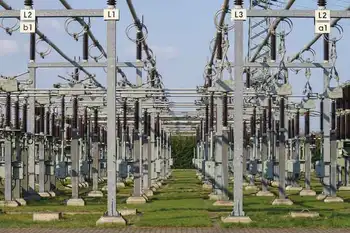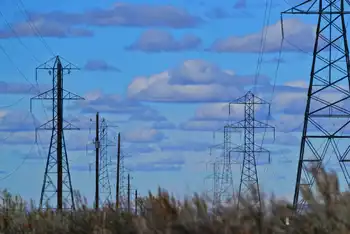20 seconds from another blackout?
TORONTO, ONTARIO - Ontario and large areas of the U.S. came within a mere 20 seconds of a cascading power outage similar to the 2003 blackout during a May 27 "blip" in the system, one of the largest American white-collar unions claims.
The leading cause was the failure of two state-of-the-art computerized protection systems specifically installed by Hydro One, Ontario's power transmission utility, to avoid a repeat of the Aug. 14, 2003 catastrophe, Andy Banks, of the Maryland-based International Federation of Professional and Technical Engineers, said recently.
"People are very, very nervous because (the 2003 blackout) caused $10 billion damage on the U.S. side of the border. That was a catastrophe and took a long time to recover. They don't want it to happen again."
The union, which represents 80,000 workers, including 1,038 striking Ontario engineers and others who walked off the job at Hydro One on June 6, has written to the U.S. Congress demanding an independent investigation.
Hydro One officials, while acknowledging the May 27 blip occurred during a routine maintenance job at a Milton switching yard, disputed claims that a blackout almost plunged the province and the eastern United States into darkness.
"It was an unfortunate operator error. We're certainly not happy about that. It shouldn't have happened and there's a more detailed investigation taking place right now," said Peter Gregg, the utility's vice-president of corporate communications.
He blamed the striking workers for "scaring Ontarians into thinking because they're on strike somehow the system is vulnerable and it's absolutely not true."
The utility was scrambling yesterday, however, to respond to a Washington Post report that the May incident was far more serious, and caused power generators in Ontario, New Brunswick, New York and Massachusetts to swing wildly in a matter of milliseconds, first accelerating, then decelerating before the system stabilized.
Gregg said the incident occurred on a high-voltage circuit when the breaker in the Milton yard was inadvertently left switched to a grounded "test" position after the maintenance was completed.
When the operator at the grid control centre in Barrie turned the circuit back on to resume electricity, the system short-circuited. He said most people wouldn't have noticed when lights flickered and computers blinked across much of the province at 4:15 p.m. that day.
"Our initial investigation is the system responded as it is designed to do and isolated the fault almost instantaneously. No one was hurt and it was a momentary blip on the system."
The blip was reported to the Independent Electricity System Operator, the reliability co-ordinator for Ontario, as well as to the North American Electric Reliability Council, Gregg said.
"We're currently finishing up a more detailed investigation into the blip that will be shared by all the reliability co-ordinators. We expect to have that completed in the next two weeks."
Banks said the union is not satisfied, especially since its members are the experts and they're of the opinion that the system is still vulnerable to a blackout.
They claim the failure of the protection systems led to two other massive power lines — one to the Trafalgar yard, the other to the Claireville yard — to also shut down.
In his letter to Congress, where politicians are debating whether to give more teeth to electricity regulatory bodies, international union president Gregory Junemann said the May 27 event "was a mere 20 seconds from reaching the proportion of the August 2003 blackout."
That outage affected millions in entire cities from Toronto to Boston, shut down subways and nuclear plants and left tens of thousands without water.
That incident originated at an Ohio power plant, cascading in nine seconds.
As a temporary solution, Junemann wants a restriction of power flows across the border, at transmission ties, to save the United States from such an incident.
Banks denied the issue had anything to with the Ontario strike. But, "the only people who can fix this and determine what the problem is are on strike. So in that sense, it is about a strike, but it's not about fear-mongering."
Related News

Manitoba Government Extends Pause on New Cryptocurrency Connections
WINNIPEG - The Manitoba government has temporarily suspended approving new electricity service connections for cryptocurrency mining operations. The decision comes as the province grapples with the cryptocurrency industry's growing energy demands and potential impact on electricity rates for residents and businesses.
The Original Pause
The pause was initially imposed in November 2022 due to concerns that the rapid influx of cryptocurrency mining operations could place significant strain on the province's electrical grid. Manitoba Hydro, the province's primary electric utility, warned that unregulated expansion of the industry could necessitate billions of dollars in infrastructure investments, potentially driving up electricity…




